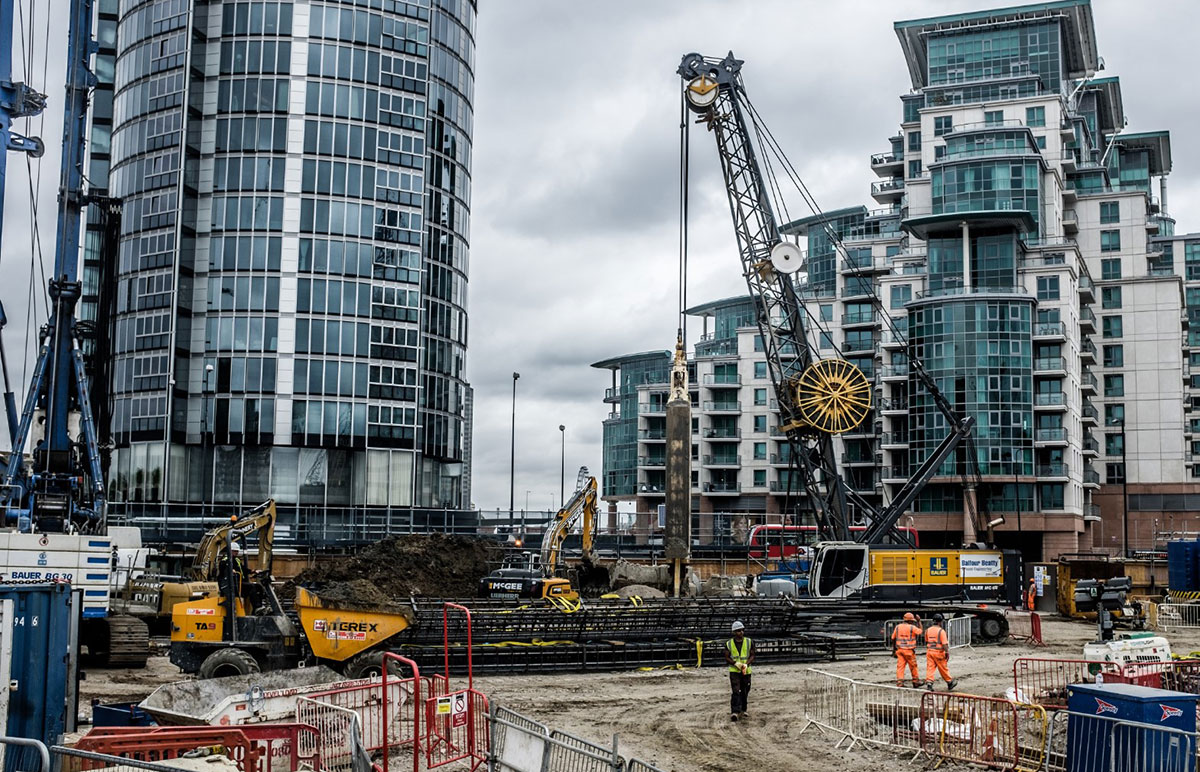Rumored Buzz on Geotheta
Rumored Buzz on Geotheta
Blog Article
7 Simple Techniques For Geotheta
Table of ContentsAll About GeothetaGeotheta Things To Know Before You Get ThisFascination About GeothetaGeotheta - An OverviewUnknown Facts About Geotheta

They carry out site investigations, collect examples, execute lab tests, and assess data to evaluate the suitability of the ground for construction projects - Engineer of Record. Based on their searchings for, geotechnical designers give suggestions for foundation style, slope stability, maintaining structures, and mitigation of geotechnical dangers. They team up with other specialists, such as designers, structural designers, and construction groups, to make sure that geotechnical considerations are integrated right into the overall project style and application
By examining the habits and residential or commercial properties of dirt and rock, they can identify prospective geotechnical risks such as landslides, soil negotiation, or incline instability. Their proficiency assists stop failures or mishaps that might jeopardize lives and property. Below are some comprehensive responsibilities and responsibilities of a geotechnical designer: Site Examination: Geotechnical engineers conduct site examinations to gather data on subsurface conditions.
They interpret the information to recognize the buildings and actions of the soil and rock, including their toughness, leaks in the structure, compaction attributes, and groundwater conditions. Geotechnical Analysis and Layout: Geotechnical engineers assess the data gathered during website examinations to evaluate the stability and viability of the website for construction jobs. They carry out geotechnical computations and modeling to review factors such as bearing capacity, settlement, slope security, lateral earth pressures, and groundwater flow.
The Definitive Guide to Geotheta
Structure Layout: Geotechnical engineers play an essential function in developing structures that can securely sustain the intended framework. They assess the dirt conditions and lots requirements to establish the proper structure type, such as superficial foundations (e.g., grounds), deep foundations (e.g (https://moz.com/community/q/user/geotheta?_gl=1*xkyvtd*_up*MQ..*_ga*NjU0Mjk2NzIxLjE3MjI2MDU1Nzc.*_ga_DS7K9Q3S5W*MTcyMjYwNTU3Ni4xLjAuMTcyMjYwNTU3Ni4wLjAuMA..)., stacks), or specialized methods like soil improvement. They think about elements such as settlement limits, bearing capacity, and soil-structure communication to create optimum structure layouts
They examine building and construction strategies, monitor website activities, and conduct area examinations to confirm that the design recommendations are followed. If unforeseen geotechnical problems occur, they assess the scenario and supply suggestions for remediation or changes to the style. Threat Evaluation and Mitigation: Geotechnical designers evaluate geotechnical threats and threats connected with the task site, such as landslides, liquefaction, or dirt disintegration.

Collaboration and Interaction: Geotechnical engineers function carefully with various other read specialists associated with a project, such as designers, structural designers, and building groups. Reliable communication and collaboration are vital to incorporate geotechnical considerations right into the general project design and construction procedure. Geotechnical engineers give technical proficiency, solution queries, and make certain that geotechnical demands are fulfilled.
Facts About Geotheta Uncovered
Here are some kinds of geotechnical designers: Structure Designer: Foundation engineers concentrate on designing and evaluating structures for frameworks. They evaluate the dirt problems, tons requirements, and site features to determine the most suitable structure kind and layout, such as superficial structures, deep structures, or specialized techniques like pile foundations.
They assess the elements influencing incline security, such as dirt properties, groundwater conditions, and incline geometry, and create techniques to stop incline failings and alleviate dangers. Earthquake Engineer: Earthquake engineers focus on evaluating and making frameworks to endure seismic pressures. They analyze the seismic threat of a website, review dirt liquefaction capacity, and develop seismic design criteria to make sure the security and durability of structures during quakes.
They execute field screening, accumulate examples, and evaluate the collected information to identify the dirt residential or commercial properties, geologic formations, and groundwater problems at a site. Geotechnical Instrumentation Engineer: Geotechnical instrumentation designers concentrate on tracking and measuring the behavior of dirt, rock, and frameworks. They install and keep instrumentation systems that check factors such as soil negotiation, groundwater degrees, incline motions, and structural displacements to analyze efficiency and provide very early warnings of potential problems.
Geotheta for Dummies
They conduct examinations such as triaxial examinations, debt consolidation examinations, straight shear tests, and leaks in the structure tests to gather information for geotechnical analysis and style. Geosynthetics Engineer: Geosynthetics engineers focus on the style and application of geosynthetic materials, such as geotextiles, geogrids, and geomembranes. They make use of these materials to boost dirt security, reinforce slopes, supply drainage services, and control disintegration.
They tend to be investigative people, which means they're intellectual, introspective, and inquisitive. They are curious, systematic, sensible, analytical, and rational. A few of them are additionally social, indicating they're kind, charitable, cooperative, person, caring, practical, empathetic, skillful, and friendly. Does this seem like you? Take our complimentary occupation test to figure out if geotechnical engineer is among your leading job suits.
In the office atmosphere, geotechnical engineers utilize specialized software devices to execute computations, produce designs, and assess information. They prepare reports, review project specifications, communicate with clients and team members, and coordinate task tasks. The office setup gives a favorable environment for study, evaluation, and partnership with other professionals involved in the task.
All about Geotheta
They frequently see project websites to conduct website investigations, analyze geotechnical conditions, and gather data for analysis. These gos to include taking a trip to various locations, occasionally in remote or tough surfaces. Geotechnical engineers may perform soil sampling, conduct examinations, and screen construction tasks to make certain that the geotechnical aspects of the task are being executed properly.
Geotechnical engineers likewise function in specialized geotechnical research laboratories. Geotechnical laboratory engineers work thoroughly in these settings, handling testing equipment, operating tools, and videotaping information.
Report this page